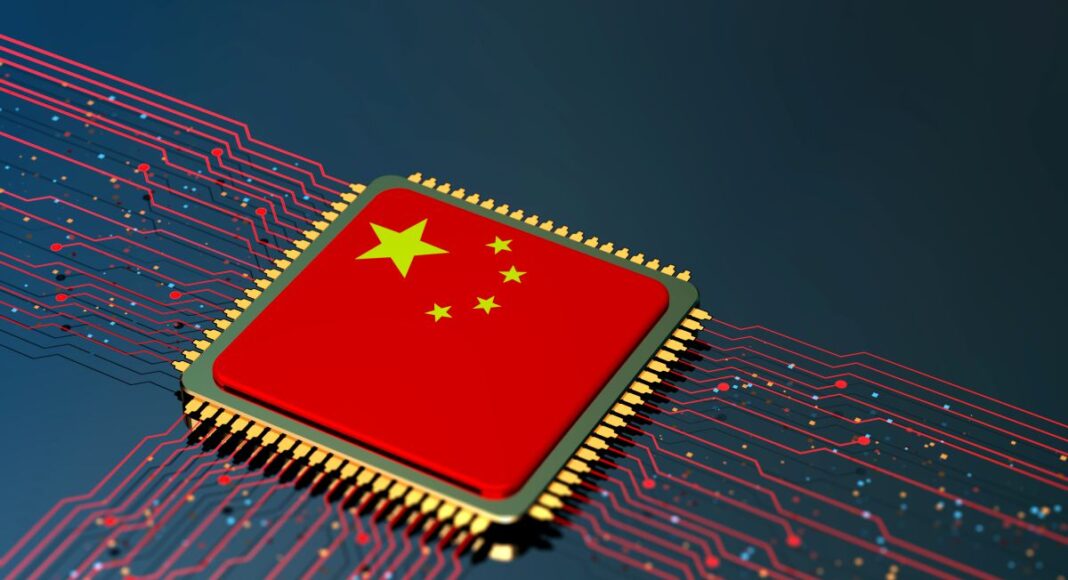The following is an excerpt from Angela Zhang’s recent book, High Wire, out at Oxford University Press. Please join the Stigler Center on April 3 at 6:30-7:30 pm CT for a conversation with Zhang, where she’ll discuss High Wire with Financial Times‘ China Technology Correspondent Eleanor Olcott. You can register for the livestream of the event here.
How does China regulate its Big Tech? Far from being of interest only to academics, this is a trillion-dollar question with profound implications for Chinese businesses and international investors. Indeed, China is the only country to have succeeded in fostering tech giants that can rival those of the United States. Companies such as Alibaba, Tencent, ByteDance, Meituan, and Pinduoduo are among the world’s top 10 largest internet firms in terms of market capitalization. In 2017, Tencent overtook Meta (then called Facebook) to become the world’s fifth largest publicly traded company. China is also home to the largest unicorns (privately held startups worth over USD 1 billion) in the world. In 2020, the country boasted 227 unicorns, second only to the United States with 233. Of the world’s top 10 unicorns in 2020, 6 came from China, with 4 Chinese companies topping the chart. For years, Chinese regulatory authorities have adopted a very lax and tolerant stance toward regulating its Big Tech, with the goal of cultivating tech titans capable of outperforming their foreign rivals.
However, starting in October 2020, against the political backdrop of President Xi Jinping’s “common prosperity” campaign, Beijing has unleashed a seemingly unrelenting blizzard of regulatory measures against Chinese tech firms in areas ranging from antitrust to data and labor. This massive regulatory campaign started with the sudden debacle of Ant Group’s initial public offering (IPO) and has since spread like wildfire, affecting a wide range of industries—from fintech and e-commerce to social media, food delivery, ride-hailing, and even tutoring. In 2021, China’s antitrust authority imposed a combined fine of USD 3.3 billion on Alibaba, the nation’s largest e-commerce company, and Meituan, its largest fooddelivery company. That same year, the ride-hailing behemoth Didi found itself subject to a surprise cybersecurity review two days after its IPO listing in New York. Tencent, owner of the ubiquitous messaging app WeChat, also saw some of its mergers restricted or blocked. By March 2022, Chinese tech giants had suffered an extraordinary USD 2 trillion loss in value from their peak in early 2021, with shares of major tech firms such as Alibaba, Meituan, and Didi slumping more than 50 percent. Alarmed by these developments, and seeking to stave off further political pressure, Chinese tech bosses and digital giants are now funneling vast sums of money into socially beneficial projects and charities.
China’s tech crackdown has also alarmed the White House. As the rising Asian economic superpower reorients its Big Tech firms toward developing more hardcore, cutting-edge technologies to stay competitive with the United States, profound questions have been raised about the future of the US–China tech rivalry. Will Chinese national champions such as Tencent and Alibaba, which thrive on producing video games and selling clothes online, be able to help China close the technological gap with the United States? What might the future hold for Chinese tech firms eager to access the US capital market? At the time of writing, Chinese firms seeking to list in the United States are struggling to overcome strict cross-border datatransfer rules recently imposed by the Chinese government. A prominent example is Didi, which delisted from the United States—vividly illustrating the intensity of the pressure exerted on domestic firms by China’s cyber watchdog. In light of these developments, it is unsurprising that Chinese Big Tech regulation has garnered intense attention from the media, the business community, and academia. There is, however, no established consensus on how to interpret these trends. Two primary views have surfaced in response to the government’s recent tech crackdown, representing critics and proponents of China’s regulatory initiatives.
Critics of China’s regulatory campaign have mostly traced its underlying impetus to the politics of the Chinese Communist Party (CCP), in particular the internal power struggle leading up to the 20th CCP Congress and the CCP’s broader ambition to assert unbridled and pervasive control over Chinese society. Such critics are also alarmed by the common prosperity campaign, whose central ethos calls for a more equal distribution of wealth. They see China’s recent regulatory actions as an attempt to roll back decades-long market reforms and restore the country’s socialist roots, thereby fulfilling Mao Zedong’s ultimate vision. Although some critics acknowledge the existence of sound regulatory logic underpinning the new measures, they remain skeptical about the underlying motivation of the crackdown. China experts Barry Naughton and Jude Blanchette underscore that China’s income inequality is hardly a new issue, and regulatory gaps that exacerbate these disparities have existed for years. Pointing to the upcoming 20th CCP Congress as a determining factor, they suggest that the launch of this sudden and multifaceted legal campaign against tech firms was primarily driven by the desire of the Xi administration to give its cadres an opportunity “to demonstrate their loyalty and competence.” Overall, these critics cast a bleak outlook not only for China’s tech sector, but for its economy as a whole, warning that the crackdown is driving China into the unknown and will strangle its greatest source of economic dynamism.
On the other hand, another group of observers views Chinese regulation in a more favorable light, viewing the latest measures as China’s attempt to “catch up” with the West by correcting the excesses of capital expansion. Thinkers in this camp believe that the Chinese government has been more responsive than its Western counterparts in curbing tech monopolies and their exploitation of the public. Indeed, the ongoing digital transformation of the world’s societies and economies is posing unprecedented challenges for mankind: although innovation generally enhances productivity growth and social mobility, it has also become a source of income and wealth inequality. In the United States, superstar tech firms such as Google, Amazon, Meta, Apple, and Microsoft have so pervasively invaded multiple sectors and product lines that they have discouraged other firms from entering the market, thus foreclosing potential avenues for innovation. The fact that yesterday’s innovations can entrench today’s incumbents demonstrates the power that tech giants have in deterring new entrants, thereby undermining productivity growth and social mobility in the long run. Such market dominance is particularly worrying as there is increasing evidence that big businesses are capturing Western governments, making it ever more difficult to push forward reforms. Prominent economists, including Raghuram Rajan and Luigi Zingales, now call for protecting capitalism from the capitalists. This, however, is far from easy. As Katharina Pistor observes in The Code of Capital, the ultra-rich are adept at leveraging the highly complex legal codes of different jurisdictions to create, preserve, and pass on their wealth. The level of complexity in the interplay of state law and private legal ordering has led her to question whether the current form of global capitalism has become ungovernable. Similarly, David Ellwood, a Harvard economist, points out that even though many solutions have been proposed in the West, they all “stumble on both the question of whether they can ever be achieved politically and whether the scale and speed of the changes are sufficient to achieve real changes in inequality.
Both of the above viewpoints—that is, both critics and supporters of China’s recent wave of tech regulation—have their merits. However, neither viewpoint is complete. Critics are correct that the harsh regulatory crackdown has afforded the government a much greater regulatory arsenal, thus strengthening its grip over the tech sector. Critics also have good reasons to be concerned about the common prosperity campaign, which could curb entrepreneurial spirits and sap business confidence. But supporters are also rightly concerned about income inequality. China’s transformation from a poor country into the world’s second-largest economy brought a dramatic increase in its level of inequality. As China enters its own “Gilded Age,” to borrow a term originally used to describe the late-nineteenth-century United States, inequality is becoming a worrying trend. China’s Gini coefficient, a measure of income inequality, has been hovering around 0.46 to 0.49 for decades, which is above the 0.40 red line for inequality. In 2015, those with incomes in the top 10 percent of China’s earners accounted for approximately 41 percent of the total national income, while the top 1 percent accounted for around 14 percent, according to a study by Thomas Piketty and co-authors. Inequality in China is now worse than in Europe and is fast approaching the level seen in the United States. Indeed, China’s wealth gap seems only to have widened in recent years, with the wealthiest 1 percent of Chinese people holding 30 percent of the country’s wealth in 2020.
From “High Wire” by Angela Huyue Zhang. Copyright © 2024 by Angela Huyue Zhang and published by Oxford University Press. All rights reserved.
Articles represent the opinions of their writers, not necessarily those of the University of Chicago, the Booth School of Business, or its faculty.






